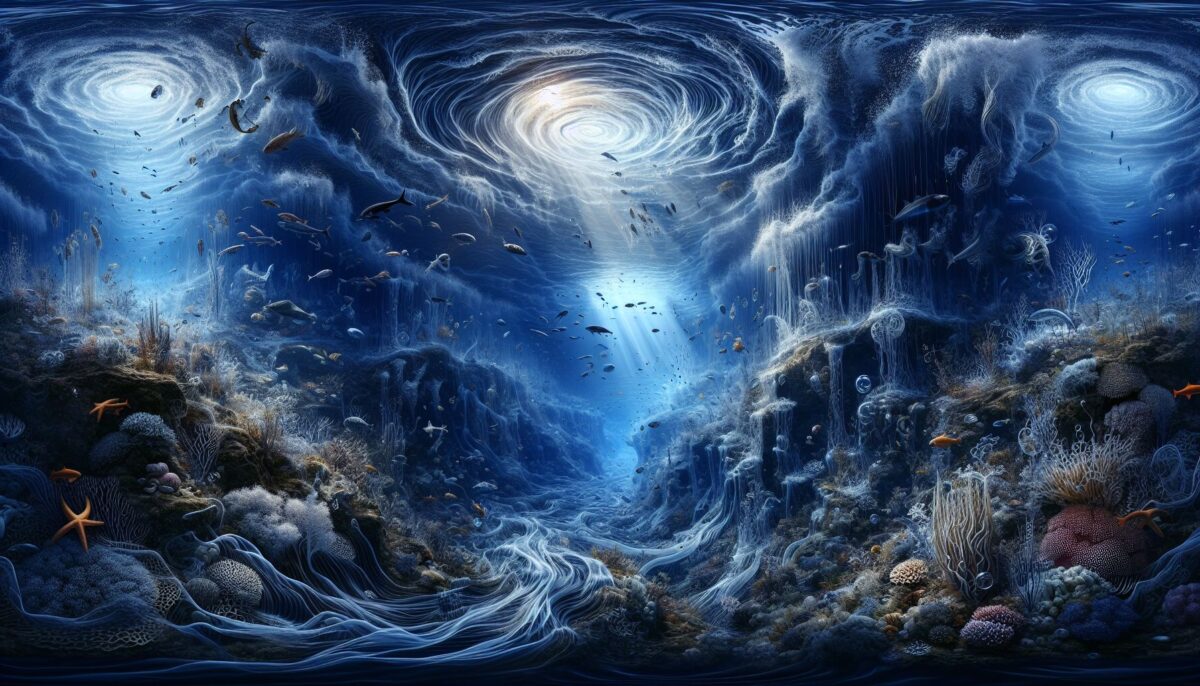Have you ever wondered about the mystery behind the never-ending stillness and serenity of the ocean and then suddenly its raging storms and tidal waves? Ever wondered how marine creatures travel thousands of kilometers to spawn in an area they’ve never seen before? The answers lie in the movement hidden beneath the calm surface of the sea, stirring the vast bodies of water around the world. This mysterious phenomenon is none other than the Ocean Currents.
Marvelous Ocean Currents: Nature’s Conveyor Belt
Ocean currents, often referred to as the “stadium wave” or the “global conveyor belt,” are continuous and directed movements of ocean water. These movements are generated by various forces including the wind, water density differences, and tides caused by the gravitational pull of the Moon and Sun. The ocean currents, which are an essential part of Earth’s climate system, transport heat from the equator to the poles, regulate the world’s climate, and influence the marine life habitats.
Types of Ocean Currents: The Surface Currents and The Deep Currents
There are two types of ocean currents: surface currents and deep water currents. Surface currents, constituting about 10% of all the water in the ocean, are generally caused by the wind as it blows across the surface of the water. These currents can be swift and extend to depths of about 400 meters. The Gulf Stream in the Atlantic is an excellent example of a swift, deep, and narrow surface current.
On the other hand, the deep water currents make up the other 90% of the ocean and are driven by differences in the water’s density, which is controlled by the temperature (thermo) and the salinity (haline). Hence, these currents are known as thermohaline currents. The over-arching circulating conveyor belt of these large deep-water currents is referred to as the Global Conveyor Belt. It has large impacts on the earth’s climate control system.
The Driving Forces: What Moves The Ocean
The wind, the rotation of the earth (Coriolis Effect), and the sun’s heat are the primary driving forces behind the surface ocean currents. The prevailing winds, namely the trade winds and the westerlies, are the strongest factor affecting the top layer of the sea water and causing it to move. The Coriolis Effect, which is due to the Earth’s rotational forces, influences the currents’ direction.
While whereas the thermohaline circulation is driven by the variations in the water’s temperature and salinity across the world resulting in differences in the water’s density. For example, at the North Pole, when the seawater freezes to form ice, the salt is left behind making the surrounding water saltier. This water then becomes denser and sinks to the ocean floor, causing a flow of water along the ocean bottom.
Complex Patterns and Impactful Phenomena
The patterns evidently portrayed by these ocean currents are of immense importance to climatic conditions, marine biodiversity, and navigation. The great ocean conveyor belt of currents transfers heat from tropical regions towards the poles, playing a vital role in warming the world’s climate, considerably more in the northern Atlantic region.
On the topic of marine biodiversity, currents serve as highways transporting small marine creatures and microbes across vast oceanic distances, helping to boost productivity and biodiversity in parts of the sea that would otherwise be less habitable.
The shipping industry relies heavily on understanding ocean currents patterns, as correct timing can make navigation quicker and more fuel-efficient.
The Not-So-Silent Changes
With every disadvantage posing an advantage, the substantial shifts in wind patterns and increasing ocean temperatures due to global warming can disrupt the natural cycle of ocean currents. A possible slowdown in the Atlantic Meridional Overturning Circulation (AMOC), a major conveyor belt of warm surface water towards the north, may potentially result in harsher, colder winters in Western Europe, despite an overall warming trend worldwide.
Unravelling the Mystery: Research and Exploration
Our understanding of how the ocean currents work has come a long way since sailors first filled bottles with notes about their journeys and threw them overboard, in hope that currents would carry them to fellow sailors. Today, we have satellite technology, autonomous ocean-going drones like Saildrones and high-resolution numerical models to track and predict the ocean currents providing us with critical information about climate change and to guide marine operations.
Through understanding and appreciating the science of these ‘rivers in the sea,’ we can begin to comprehend their diverse roles in shaping the world – from affecting climates and influencing marine habitats, to shaping human navigational routes and economy. The currents, though hidden beneath the ocean surface, silently hold the pointers to many solutions regarding the earth’s climate and marine ecology, thus, the essential need for research, study, and protection of these unseen marine forces becomes self-evident.
